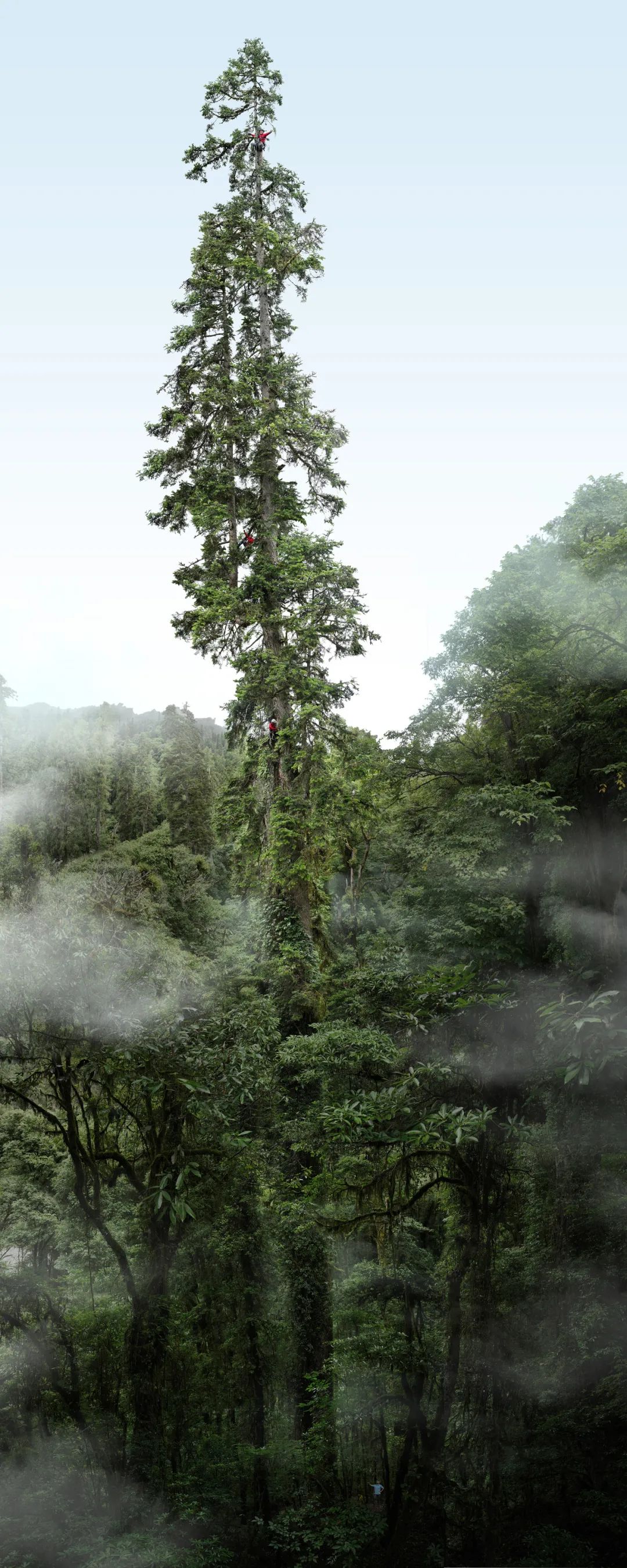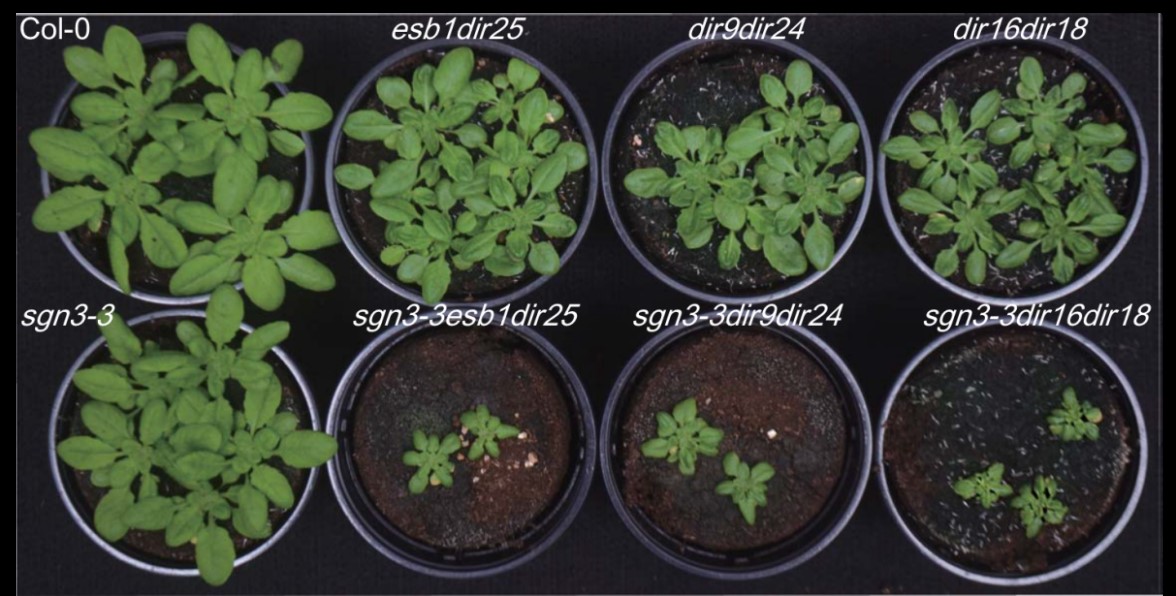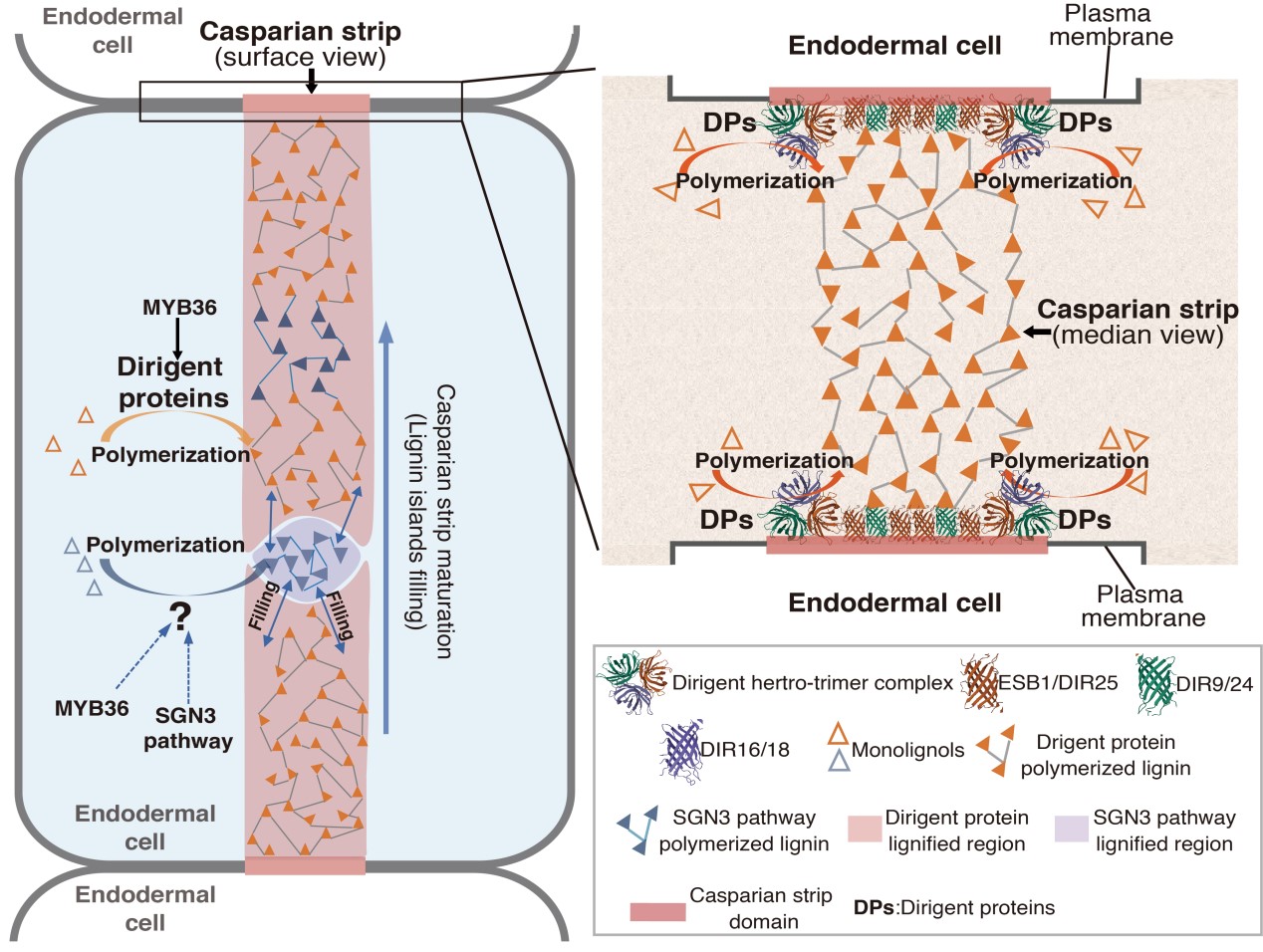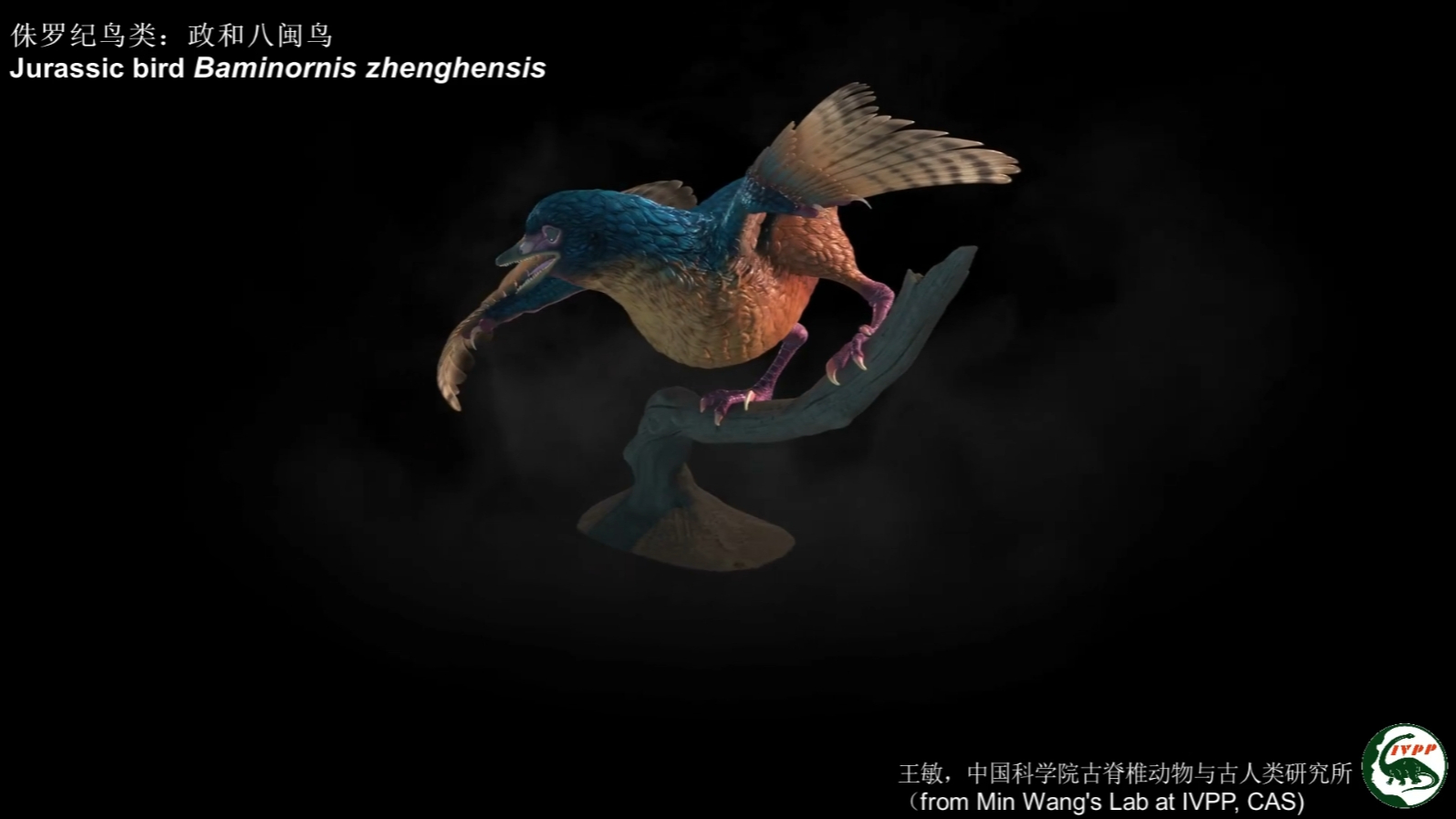

China's giant tree, the Yunnan Huangguo fir, is life-like, with a height of 83.4 meters. Photography and Compositing: "Wild China" Studio
Lignin is one of the biological carbon sinks with the highest carbon density, strongest hydrophobicity, best stability, and highest proportion on the earth. Its synthesis mechanism is related to the realization of the "double carbon" goal (carbon peak, carbon neutrality) .
For decades, people have tried to modify the composition of plant lignin through genetic engineering and other methods. However, due to reasons such as lack of understanding of the lignin polymerization process, progress has been extremely slow.
Kjeldahl's band is a special lignified cell wall of endodermal cells in plant roots. It is tightly anchored to the cell plasma membrane and forms a key barrier to control the diffusion of water and minerals in plants . It has extremely important biological functions.
On October 27, ThePaper Technology learned from the Center for Excellence in Molecular Plant Science of the Chinese Academy of Sciences that Chao Daiyin’s research group collaborated with David Salt’s research group at the University of Nottingham in the United Kingdom to discover guide proteins (Dirigent proteins). , DPs) play a key role in the establishment of Kjeldahl zones and lignin polymerization in plants, thus providing a new theory for future crop molecular design for efficient use of water and nutrients and the creation of efficient "carbon sink" plants.
The aforementioned research results were published online on the 27th in Science, the top international academic journal. The title of the paper is "A dirigent protein complex directs lignin polymerization and assembly of root diffusion barriers." of the root diffusion barrier).
Earlier, on August 31, Chao Daiyin's research group discovered the molecular mechanism of anchoring and adhesion between the Kjeldahl bands and the cytoplasmic membrane in rice, but the molecular mechanism of lignin polymerization and precise deposition in the Kjeldahl bands remains unresolved .
In a newly published study, researchers identified a group of six guidance proteins in Arabidopsis thaliana that are localized to Kjeldahl bands in root endocortical cells.
Using a series of cutting-edge technologies in molecular genetics, ionomics and cell biology, researchers found that this group of proteins is a decisive factor in regulating the precise deposition of lignin at the Kjeldahl bands, and is also responsible for maintaining the tight connection between the Kjeldahl bands and the cytoplasmic membrane. necessary factors.

Growth phenotypes of related mutants in Arabidopsis thaliana.
If this type of guidance protein is mutated, it will directly affect the formation of Kjeldahl bands and the membrane-wall tight junctions at Kjeldahl bands, which will seriously disrupt the balance of mineral elements in plants and the plant's adaptability to salt and drought stress.

Molecular mechanisms by which the Dirigent protein complex regulates Kjeldahl bands development and lignin polymerization. Photo provided by interviewee
This research result refreshes people's understanding of the formation process of Kjeldahl bands.
The Kashield zone plays a huge role in the nutrient use efficiency of crops and the adaptability to salt and drought stress . Therefore, it is also an important target for cultivating high-yielding, efficient, and nutritionally stress-tolerant crop varieties. This research breakthrough will undoubtedly provide a huge boost to these efforts.
This study has greatly deepened people's understanding of the lignin polymerization process and confirmed for the first time that lignin polymerization is participated by guide proteins.

A community of giant trees on the banks of the Zayu River. Photography and composition: Ke Xuanhui and Wang Yaling of "Wild China" Studio
Dr. Gao Yiqun from the Department of Plant and Crop Science at the University of Nottingham, UK, and Huang Huangquan, associate researcher at the Center for Excellence in Molecular Plant Science, Chinese Academy of Sciences, are the co-first authors of the paper. Professor David Salt, Associate Professor Gabriel Castrillo of the University of Nottingham, UK, and Researcher Chao Daiyin of the Center for Excellence in Molecular Plant Science, Chinese Academy of Sciences, are the corresponding authors of the paper. In addition, researcher Chen Xiaoya from the Center for Excellence in Molecular Plant Science of the Chinese Academy of Sciences, Dr. Guilhem Reyt from the LIPME Institute of the French National Center for Scientific Research, and Associate Professor Xue Peiying from Hebei Agricultural University also participated in this work.
This research was funded by the Royal Society Newton International Fund Project, the Royal Society Newton Fund Senior Scholar Project, the National Natural Science Foundation of China, the Chinese Academy of Sciences’ Advanced Science and Technology Project, the National Key R&D Program, and the Youth Innovation Promotion Association of the Chinese Academy of Sciences.
Paper link: http://www.science.org/doi/10.1126/science.adi5032



Nicely put. Regards! casino en ligne Thanks a lot. Valuable information. casino en ligne You reported this perfectly. casino en ligne Thanks, Quite a lot of information. casino en ligne Kudos! Valuable information! casino en ligne Great content, Regards! casino en ligne You suggested that adequately! casino en ligne With thanks, Numerous data. casino en ligne Cheers, I appreciate this! casino en ligne Appreciate it! Loads of content. casino en ligne